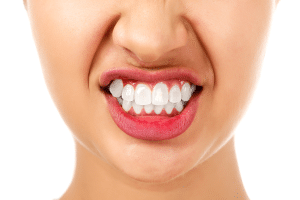
The temporo-mandibular joint is located on both sides of the head where the jawbone meets the skull and is used during talking, chewing, swallowing, yawning and many other everyday activities. TMJ related disorders can cause tension headaches and sharp pain in the jaw and can lead to long-term discomfort. Many times, TMJ is caused by excessive teeth grinding, often related to stress, hormones, joint structure, or vitamin deficiency.
Treatment for TMJ
Several Botox injections are made into the masseter muscle in the cheek. This can relieve jaw tension by making the muscles unable to engage in the movement that causes headaches and pain. This is an optimal treatment for patients suffering from TMJ because it can be done within 10-30 minutes by a trained medical provider and requires little to no downtime. The pain associated with an injection is minimal and brief and there may be mild bruising, numbness or redness around the injection site. The TMJ tenderness will start to disappear almost immediately.
Some people notice that they look more natural and relaxed after the injection as well. As Botox is most commonly known to smooth the look of fine lines and wrinkles, it may help diminish any wrinkles around the injection site.
Botox for the treatment of TMJ is a great alternative for somebody that has tried other treatments with little success or someone who does not want an invasive procedure. Botox is a safe and effective treatment for people suffering from jaw pain, but it is not FDA approved for the treatment of TMJ so more research is needed to determine all of the benefits. It is important to consult your patient and manage expectations with them about the treatment.
